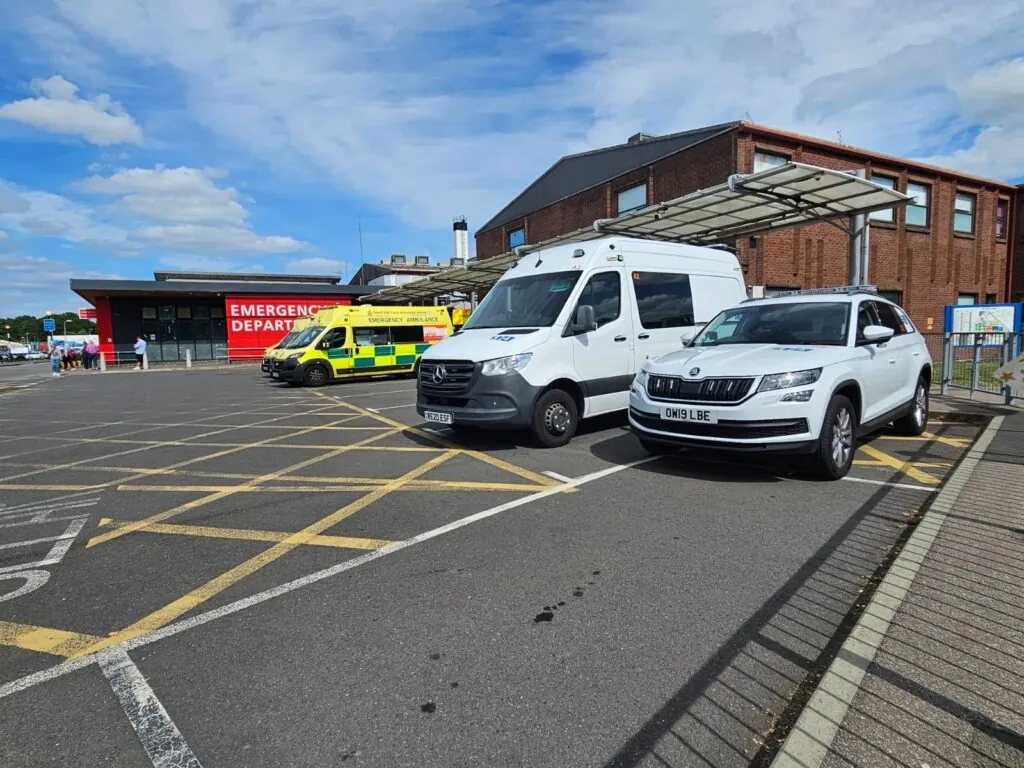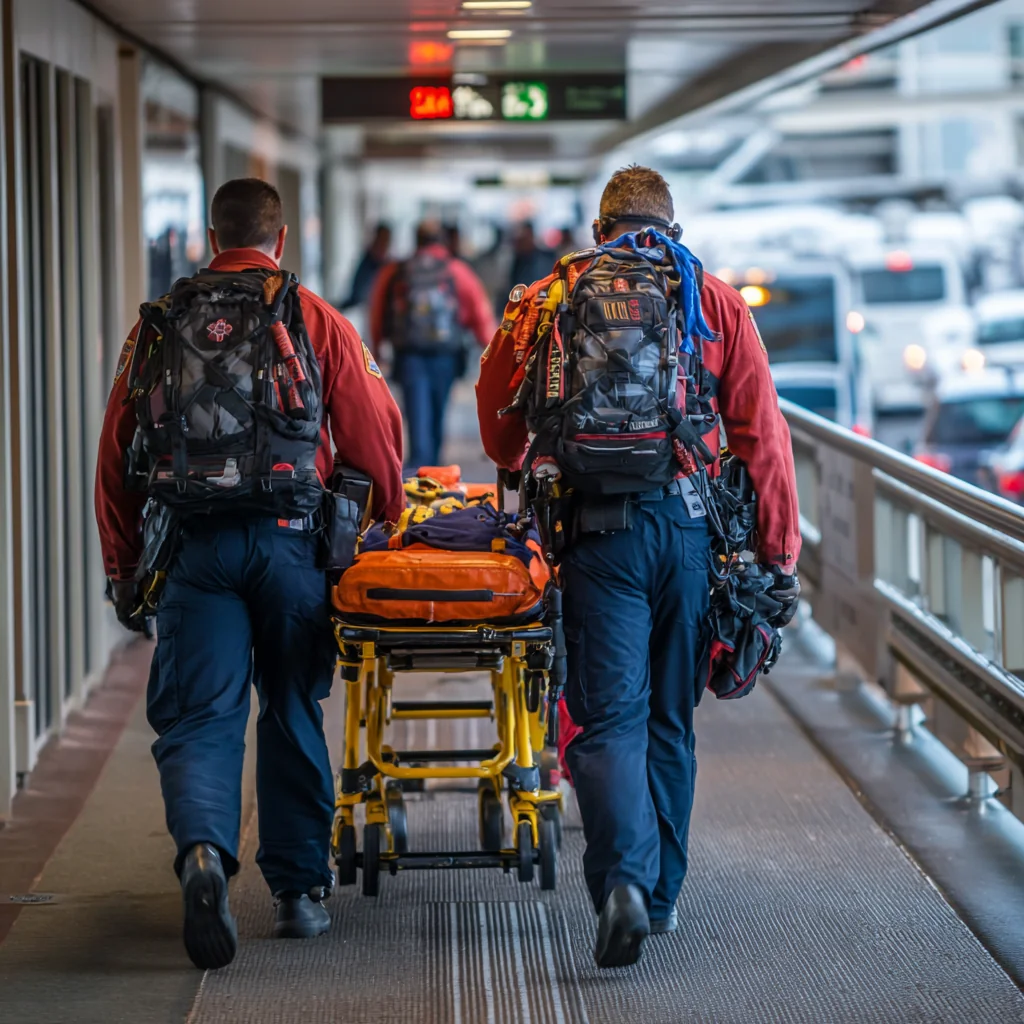When someone is experiencing a mental health crisis, the journey from one place of care to another can be just as critical as the treatment they receive on arrival. Too often, patients are left waiting for hours in unsuitable environments, heightening their distress and exposing them — and others — to unnecessary risks.
Unlike standard ambulance or taxi options, patient transfer services are designed with the specific needs of mental health patients in mind. From trained staff who specialise in de-escalation to vehicles adapted for safety and comfort, these services create a controlled but dignified environment. By reducing the risk of harm, absconding, or further trauma during transport, they not only protect the patient but also ease the concerns of families, healthcare teams, and the wider community
Why Patient Transfers Are Among the Highest-Risk Moments in Healthcare
Patient transfers are often seen as routine logistics, but they represent some of the most vulnerable moments in a patient’s care journey. Moving a patient from one facility or department to another can trigger medical, emotional, and safety challenges that, if not managed properly, may worsen outcomes. Individuals in mental health crises, for example, may experience heightened anxiety, disorientation, or agitation during transit.

Medical and situational vulnerabilities during patient transfers include:
- Medical deterioration: Patients may face sudden cardiac, respiratory, or psychiatric crises during transport.
- Stress and anxiety: Mental health patients often experience heightened distress when moved through unfamiliar or busy environments.
- Risk of aggression or self-harm: Agitation can escalate into aggressive behavior, escape attempts, or harm to themselves or staff.
- Interruptions to treatment: Delays or poor coordination may lead to missed medications, therapy sessions, or critical interventions.
These risks are compounded by operational delays. Hospitals frequently experience “bed-blocking” when patients cannot be moved to the appropriate facility on time, creating a domino effect that disrupts emergency care and overall patient flow. Extended waits in unsuitable environments can exacerbate mental health conditions, undo recovery progress, and diminish patient trust in healthcare services.
Evidence underscores the seriousness of these challenges. Studies show that errors, miscommunication, and delays during patient transfers contribute significantly to adverse events, with mental health patients particularly at risk. Safe, timely, and specialist transport is therefore not just a convenience — it is a critical component of patient safety and recovery outcomes.
What Are Secure Patient Transfer Services and Why They Matter
Not all patient transport is the same. While standard ambulances or taxis offer basic mobility, secure transfer services are purpose-built to ensure safety, dignity, and continuity of care for vulnerable patients. These services go beyond simple transportation, providing a structured, professional approach that reduces risk and supports recovery during transit.
A transfer is considered “secure” when multiple safety layers and professional expertise are applied. Key features include:
- Specialist vehicles: Purpose-built to combine security with comfort, these vehicles prevent injury, allow discreet monitoring, and create a calm environment for patients who may be anxious or distressed.
- Highly trained staff: Professionals skilled in medical care, mental health, and crisis management can detect early signs of deterioration, de-escalate agitation, and provide reassurance throughout the journey.
- Dynamic risk assessments: Each transfer is individually assessed to anticipate challenges, taking into account the patient’s current condition, behavior, and the transport environment.
Secure transfer services are essential for a range of patients, including:
- Mental health patients: Who may be at risk of anxiety, agitation, or self-harm.
- Elderly or dementia patients, whose cognitive vulnerabilities make stress, confusion, or disorientation more likely.
- Prison or court transfers: Where security, supervision, and safety are critical.
- High-risk medical patients who require ongoing monitoring during transport due to complex or unstable conditions.
By combining specialist vehicles, trained personnel, and individualized planning, secure transfer services do more than move patients from one place to another — they protect their well-being and dignity. Families and healthcare teams can have confidence that the journey itself will support recovery rather than introduce new risks.
How Secure Patient Transfers Reduce Medical Risks for Vulnerable Patients
Transporting patients with complex medical needs is far more than moving them from one location to another — it’s a critical moment where health outcomes can be positively or negatively affected. Secure patient transfers play a vital role in reducing medical risks by providing continuous monitoring, rapid intervention, and seamless communication between healthcare teams. These measures ensure that patients arrive at their destination stable and ready for ongoing treatment, minimizing disruptions in care that could delay recovery.

Key ways secure transfers protect patients with complex medical needs include:
- On-board monitoring equipment: Vehicles are often equipped with cardiac monitors, oxygen, and other essential devices to track vital signs during transit.
- Trained staff for rapid response: Personnel are skilled in identifying early signs of deterioration and can intervene immediately, preventing minor issues from escalating into serious complications.
- Seamless handover between facilities: Secure transfers ensure that all medical information, treatment plans, and observations accompany the patient, allowing receiving teams to continue care without interruption.
A practical example illustrates this impact: a patient with unstable cardiac and psychiatric conditions was transferred to a specialist facility using a secure service. Continuous monitoring and trained staff intervention during transit prevented deterioration, allowing treatment to begin immediately upon arrival. This timely, coordinated approach not only safeguarded the patient but also avoided potential emergency interventions that could have prolonged recovery.
By minimizing interruptions in care, secure transfers directly support continuity of care. Maintaining stability during transit reduces medical risks, ensures treatments are delivered on schedule, and ultimately contributes to faster, safer recovery for patients with complex needs.
How Secure Patient Transfers Reduce Safety Risks for Staff and Patients
Transporting patients with mental health challenges or other vulnerabilities can be unpredictable. Aggressive, distressed, or anxious behaviours during transit pose risks not only to the patient but also to healthcare staff and anyone in proximity. Without proper protocols, these situations can escalate quickly, resulting in incidents of self-harm, aggression, or even escape attempts.
Secure transfer teams are specifically trained to manage these risks while maintaining patient dignity. Key strategies include:
- De-escalation techniques: Staff are skilled in calming distressed patients through verbal and non-verbal strategies, reducing the likelihood of aggressive behaviour.
- Trauma-informed care: Understanding past trauma allows teams to minimize the need for physical restraint and approach each patient with empathy and respect.
- Secure yet respectful transport environments: Vehicles are designed to protect both staff and patients while maintaining a calm, non-intimidating setting.
The benefits of these measures are clear: fewer incidents of violence, self-harm, or escape attempts. Patients experience a safer, less stressful journey, while staff can perform their roles effectively without undue risk. Moreover, the controlled environment supports emotional regulation, making it easier for patients to engage positively with care upon arrival.
The Future of Secure Patient Transfer Services
As healthcare demands evolve, the need for secure patient transfer services is growing rapidly. Rising mental health cases, an aging population, and increasingly stretched hospital systems are creating pressure points where timely, safe transport is more critical than ever. Secure transfers are no longer a niche service — they are becoming an essential component of patient care pathways. Providers like Secure24 are at the forefront, setting standards for safety, efficiency, and patient-centered care.

Innovations are shaping the future of secure transfers, making them more effective and sustainable. Key developments include:
- Digital reporting and real-time monitoring: Improved communication between facilities ensures that patient information, risk assessments, and transfer status are accurately tracked and shared.
- Data transparency: Advanced analytics allow healthcare providers to evaluate outcomes, optimize routes, and continually improve service quality.
- Eco-friendly fleets: Investment in low-emission vehicles ensures that patient transport services contribute to environmental sustainability while maintaining safety and comfort.
Policy and healthcare planning are increasingly recognizing the value of secure transfer services. Integration with NHS long-term strategies and private healthcare models signals a move toward embedding these services as standard practice, rather than an optional extra. As hospitals and clinics strive to improve continuity of care, reduce delays, and minimize risk, secure patient transport is positioned as a key enabler of these goals.














Discussion about this post